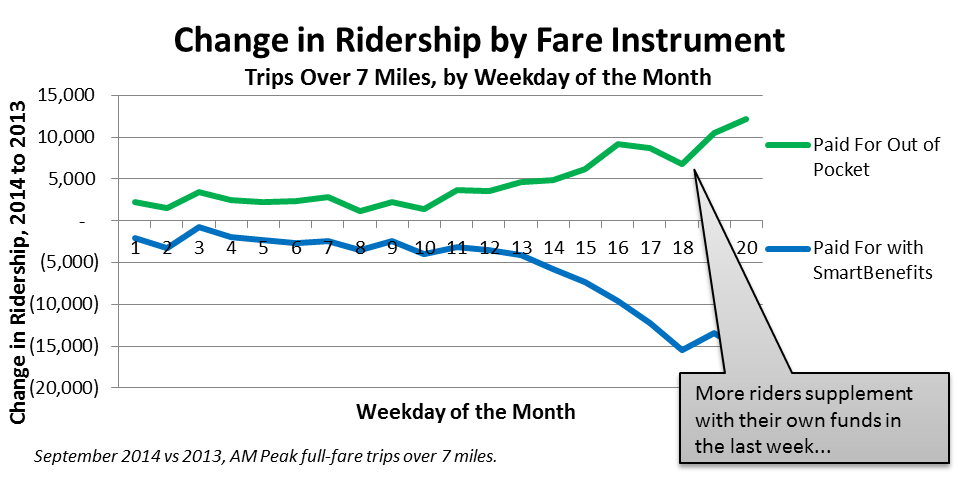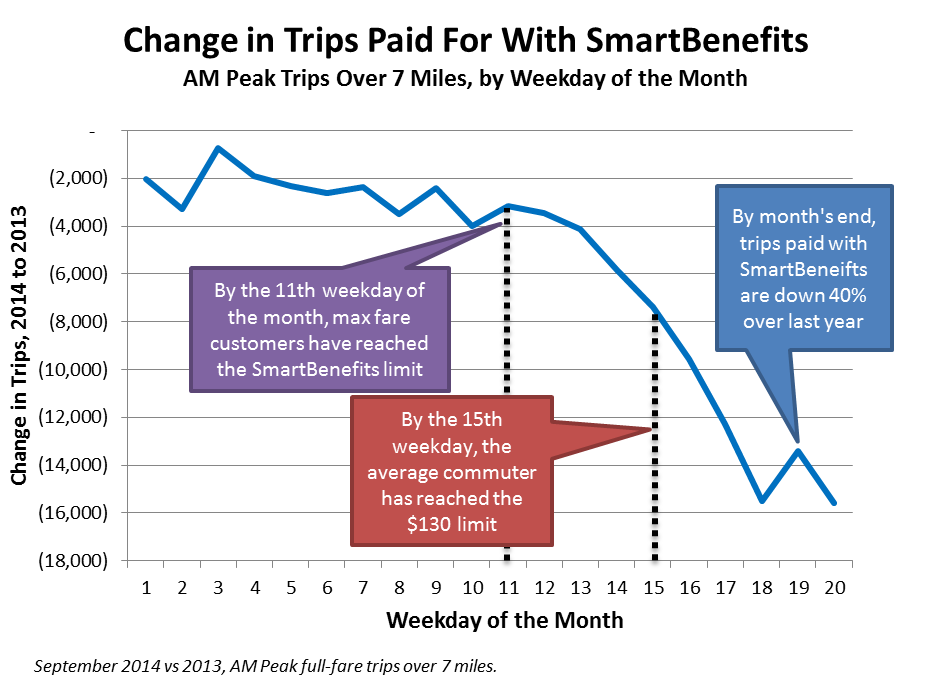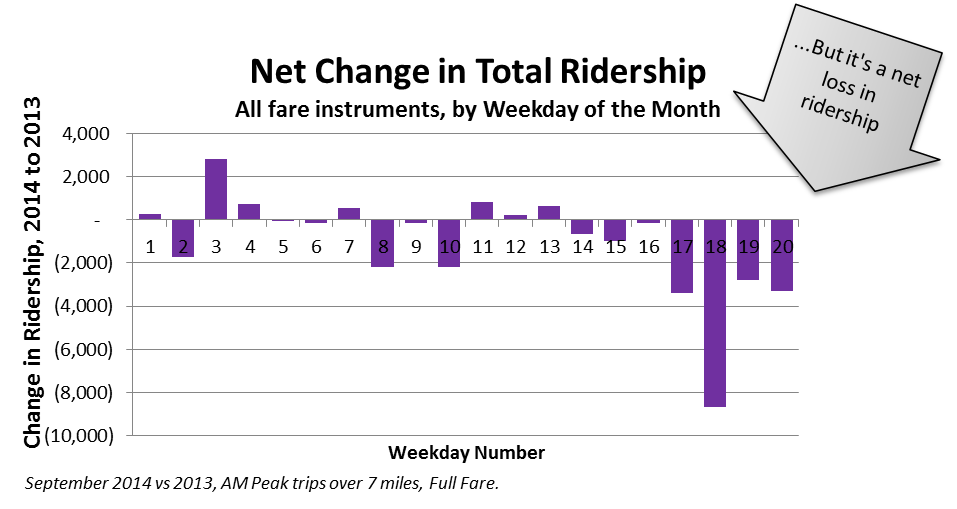Rail Ridership Down As SmartBenefits Run Out
Many Metrorail riders now run out of SmartBenefits mid-month, and they may stop riding.
Since the federal transit benefit maximum dropped from $240 to $130 per month, about 25% of regular Metrorail commuters are running out of SmartBenefits to pay their fare before the month is over. By month’s end, trips paid for with SmartBenefits are now crashing by 40% over last year. Though a variety of factors explain recent decreases in Metrorail ridership, the transit benefit is a strong explanation as to why the losses are concentrated in the second half of the month. In fact, the biggest influence on ridership over the past year may be the cut in the federal transit benefit, and ridership might even be up by about 2% otherwise.
If we look at trips per day over the span of the month, and only at trips over 7 miles paid for with SmartBenefits, we see the drop closely coinciding with when riders run out of SmartBenefits. (Shorter trips can be fully funded by the current benefit amount of $130 per month.)
The chart illustrates that by the end of the month, SmartBenefits is funding far fewer trips. Here are a few additional observations:
- Commuters paying a maximum fare of $5.90 for a 16+ mile commute and who travel every day reach the $130 limit about halfway through the month, on the 11th weekday of the month. This group is comprised of nearly 20,000 riders, around 8% of our AM Peak entries.
- Average impacted commuters run out of SmartBenefits by the third week of the month, on the 15th weekday. This is anyone with a 7-mile commute paying with SmartBenefits, roughly 55,000 riders or an additional 23% of peak AM entries.
- By the last day of the month, transactions paid for with SmartBenefits are down by more than 40% over last year.
And some — but not all — of these people may be leaving the Metrorail system and commuting some other way. The chart below shows the change in trips paid for either out-of-pocket or with SmartBenefits. It’s clear that paying out-of-pocket increases as SmartBenefits run out.

While people are “supplementing” later in the month, it’s not enough to offset the loss from SmartBenefits. This final chart illustrates that the first 15 weekdays of the month, total AM Peak ridership from the “7 miles or greater” market is down only 1% on average. In the fourth week, as SmartBenefits riders run out of funds, total ridership is down 3-4%.
We doubt riders are simply not going to work, but we are losing trips at the end of the month from somewhere. So, we’ve begun additional analysis in progress to continue probing this question.
Interestingly, we are seeing SmartBenefits trips down a little, and out-of-pocket trips up a little – and holding steady – even at the beginning of the month for this 7+ mile market. Some commuters may be reducing their Metrorail travel evenly across the month, or we may also be seeing some growth in private sector employment relative to federal. But because the big change is concentrated on the end of the month, we strongly suspect the effect is from the federal transit benefit reduction.
Download the data behind this analysis and let us know what you find. (456 kb, .xls).
We continue to dig into the data, and will post any additional findings here. In the meantime, let us know how has the federal benefit amount altered your commute patterns in the comments.




Hi Justin- When you control for Blue Line riders, is the result the same? It’s possible that some have disbanded metrorail with the blue line service cuts.
Matt S – Why would Blue Line riders ride heavily at the beginning of each month, then drop off towards the end of the month? Is there something about living at Franconia Springfield or visiting Arlington Cemetery that is different in days 1-15 of the month vs. days 16-30(31)?
Your bringing up the Blue Line is a red (blue?) herring here… totally irrelevant except that it allows you to (implicitly) dump on Metro again for cutting Blue Line service over 6 months ago.
@Dave S and @Matt S – we haven’t seen any change in ridership from markets impacted by the Blue Line that’s been significantly different from the rest of the system. But the post does agree with Dave’s overall point that we don’t see why any other factor influencing ridership (economy, service, fares) would be concentrated only at the end of the month, and not at the beginning.